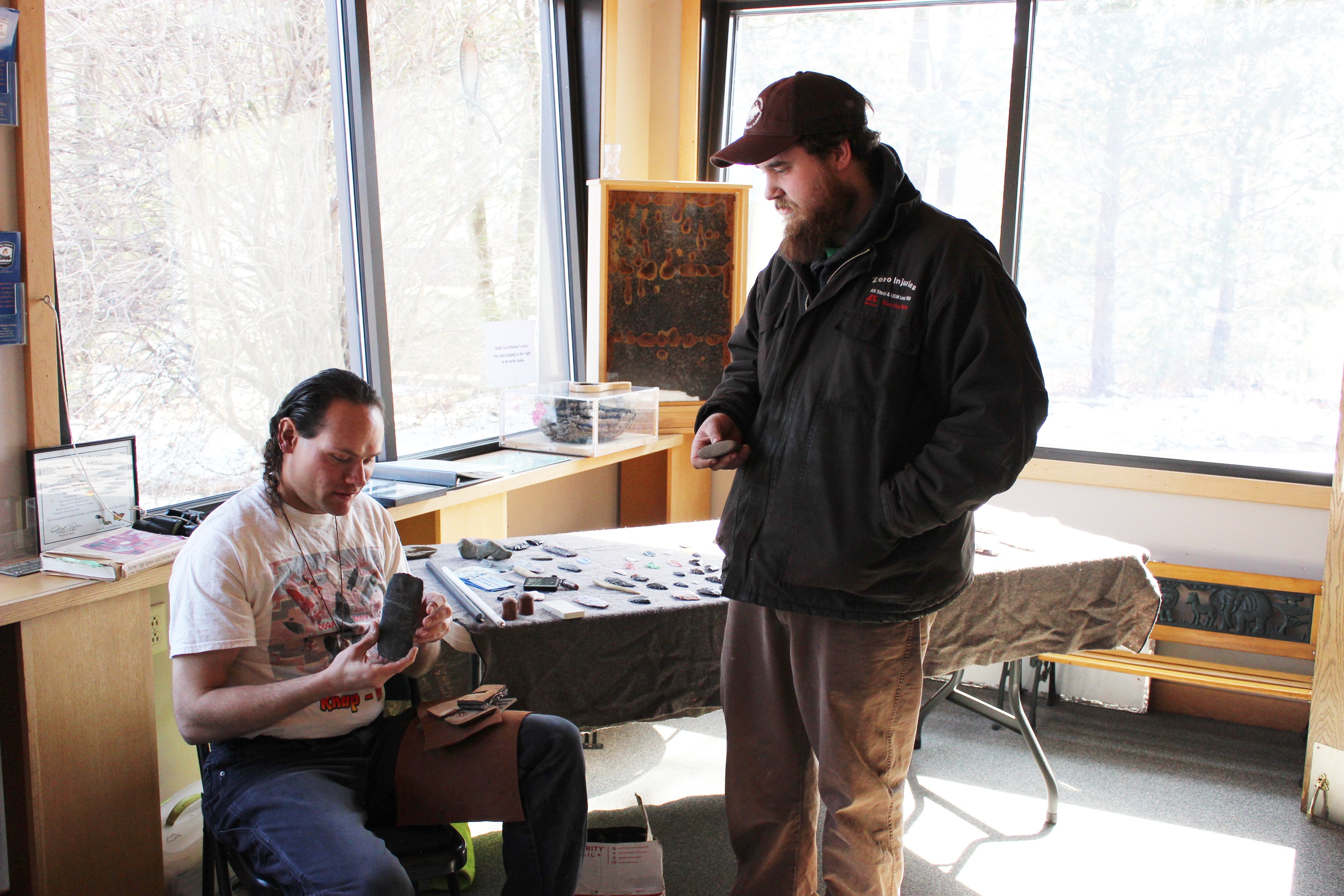By Bob Strohm
bstrohm@wbcowqel.com
Prehistoric artifacts were on full display Saturday at Lowe-Volk Park with collectors and curiosity seekers coming out to the Crawford Park District’s annual Arrowhead Day.
Celebrating the native inhabitants’ tool-making abilities, the Crawford Park District’s Arrowhead Day featured numerous collectors with their arrowhead collections on display, curiosity seekers trying to find out what their finds are, as well as flint knappers showing how the prehistoric tools were made.
Michael Kreinbrink took a few stones that he found while working clearing out field stones for a farmer to the show to try to have them identified.
“I am here to show off some pieces that I found while picking up rocks for a farmer,” Kreinbrink said. “The one I did find out is a pre-form of a gorgate or pendant, but the other one they are boggled about, so it’s a mystery I guess.”
Arrowhead collector Fred Dean had his collection that he has worked on for over 50 years on display at the event. Dean explained what got him into searching for the artifacts.
“I had a friend who was collecting them, I had never looked at the ground I was always looking up at the birds and squirrels,” Dean said. “One day he came over and had a handful of arrowheads. I asked where had got them and he said out here in these fields.”
 Dean recounted the enjoyment he got while searching for the stones with his late wife.
Dean recounted the enjoyment he got while searching for the stones with his late wife.
“My wife and I at the time, she passed away 15 years ago, started searching for them and finding these things out in the field that were laying out on the ground and we had a lot of fun,” Dean said. “I told her one night coon hunting that she could go down the corn rows with a lantern and she could find them, kind of like sending her on a snipe hunt, well she come back with arrowheads, and we had a lot of fun.”
Flint knappers were on hand displaying the methods in which the Native Americans made tools out of the stones. Jeremy Snyder explained how flint knapping is accomplished.
“You are using pressure and using it to strike the rock and break it into the shape you want. I am working on a piece of Burlington flint right now that I am going to shape into an arrowhead.”
Snyder explained what created the spark to do the stone shaping.
“I enjoy making prehistoric tools, that were made a long time ago and keeping the art alive. There aren’t many people who do this anymore and a lot of people are interested in seeing it done, so that is why I do it,” Snyder said.
Eric Rothhaar had his brother’s as well as his collection on display on hand for the event. Rothhaar gave his best advice for people who want to go out searching for arrowheads.
“Got to have a walking stick. It takes going out, I try to stay along water courses, but it takes going out and start finding things and returning. But after a while you will find nice places and you keep going back,” Rothhar said.
Rothhar explained how his brother got him into searching for the prehistoric tools.
“My brother and I are trappers and my brother had said he had lost a muskrat out back of his hunting trailer. He told me where to look for it and walking along the water and I looked down and found this nice little gorget right along the water,” Rothhar recounted.
For those that missed out on Arrowhead Day at Lowe-Volk Park, there is still time to see some native artifacts on display as Ohio History Connection loaned some artifacts including grooved axes pestles, and skives to the Crawford Park District for display. The Nature Center at Lowe-Volk Park will display these pieces until March 25.


